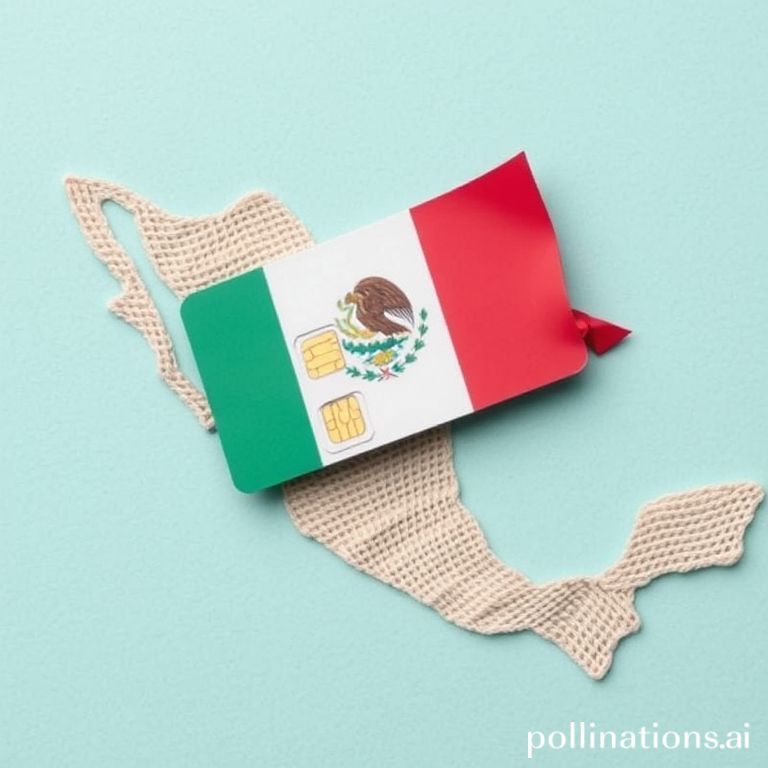Arriving in a new country is always an adventure, but navigating the initial practicalities can be daunting. One of the first things you’ll likely want to sort out is how to stay connected. Having reliable internet access and a local SIM card in Mexico will make settling in much smoother, allowing you to communicate with loved ones, manage your finances, navigate unfamiliar streets, and even find the best local tacos! Fortunately, Mexico offers a variety of options to suit different needs and budgets.
This guide will walk you through the most common and convenient internet and SIM card options available to newcomers in Mexico, helping you make an informed decision so you can focus on enjoying your new life south of the border.
Mexican SIM Cards: A Quick and Easy Solution
Purchasing a local SIM card is often the easiest and most affordable way to get mobile data and a local phone number in Mexico. Here’s what you need to know:
Where to Buy
- Airports: You can usually find SIM card vendors at major Mexican airports. While convenient, prices might be slightly higher than elsewhere.
- Convenience Stores: Chains like OXXO and 7-Eleven are widespread and sell SIM cards from various providers.
- Telcel Customer Service Centers: For more personalized assistance and a wider range of plans, visit the official stores of mobile providers like Telcel.
Major Providers
The main mobile providers in Mexico include:
- Telcel: Offers the widest coverage, especially in more rural areas.
- AT&T Mexico: Provides good coverage in major cities and along popular tourist routes.
- Movistar: Can be a more budget-friendly option, but coverage may be less extensive than Telcel.
Prepaid vs. Postpaid
For newcomers, prepaid SIM cards are generally the most practical option. They allow you to load credit as needed without being tied to a contract. Postpaid plans are available, but they typically require a Mexican bank account and proof of residency.
Activation and Registration
In Mexico, it’s legally required to register your SIM card. The vendor will usually assist you with this process, which involves providing your passport information. Keep your registration information safe as you might need it later.
Internet Options for Your Home
Once you’re settled into your new home, you’ll need a reliable internet connection. Here are some common options:
Cable Internet
Cable internet is a popular choice, offering relatively fast speeds and reliable service. Major providers include:
- Izzi: One of the largest cable internet providers in Mexico.
- Totalplay: Known for its fiber optic network in select areas.
To sign up for cable internet, you’ll typically need a Mexican address and identification. It’s advisable to compare plans and prices from different providers before making a decision.
DSL Internet
DSL internet uses your existing phone line to provide internet access. While it may be more widely available than cable in some areas, speeds can be slower. Telmex is the primary DSL provider in Mexico.
Mobile Internet (MiFi)
If you need internet access on the go or in areas where cable or DSL aren’t readily available, a mobile internet device (MiFi) can be a good solution. These devices create a Wi-Fi hotspot using a SIM card with a data plan. You can purchase MiFi devices and data plans from Telcel, AT&T, and Movistar.
Satellite Internet
In remote or rural areas where other internet options are limited, satellite internet may be the only choice. However, it can be more expensive and have higher latency than other options.
Things to Consider
- Coverage: Check the coverage maps of different providers to ensure they offer service in your area.
- Speed: Consider your internet usage needs when choosing a plan. If you stream videos or work from home, you’ll need a faster speed.
- Contract Length: Be aware of any contract requirements before signing up for an internet plan.
- Installation Fees: Ask about installation fees and any other associated costs.
Public Wi-Fi Hotspots
In addition to your own internet connection, you can also find public Wi-Fi hotspots in many cafes, restaurants, and parks in Mexico. While convenient for checking emails or browsing the web, be cautious when using public Wi-Fi, as it may not be secure.
Conclusion
Staying connected is essential for a smooth transition to life in Mexico. By understanding the different SIM card and internet options available, you can choose the solutions that best fit your needs and budget. Whether you opt for a prepaid SIM card for mobile access or a cable internet plan for your home, you’ll be well-equipped to navigate your new surroundings and stay in touch with the world.
If you enjoyed this article, don’t forget to explore more inspiring stories on Life in Mexico!
IMAGE: A vibrant and colorful street scene in Mexico. A newcomer, smiling, is holding a local SIM card package from Telcel. In the background, there’s a brightly painted building and a taco stand. The overall mood is cheerful and welcoming. The lighting is bright and sunny, creating a sense of optimism. Style: Travel photography with a focus on cultural immersion.


